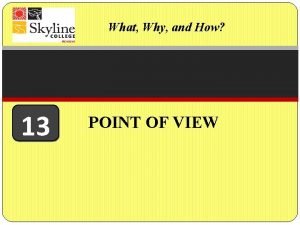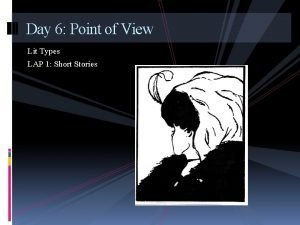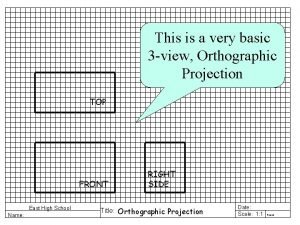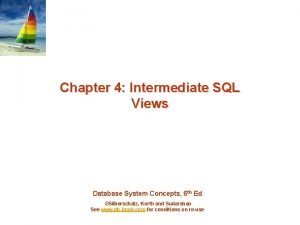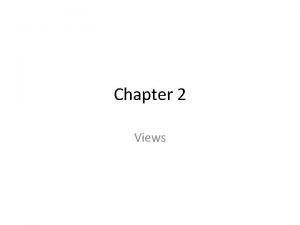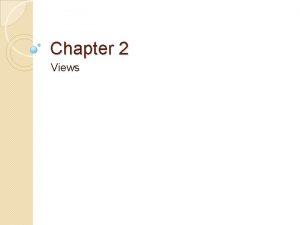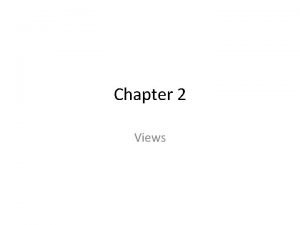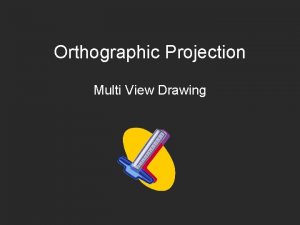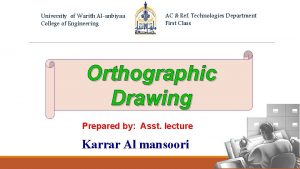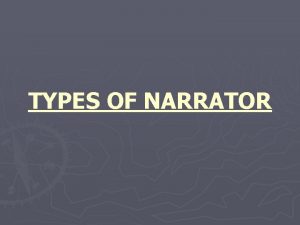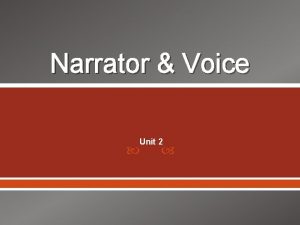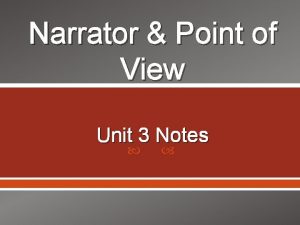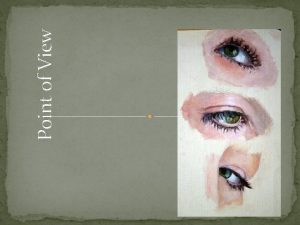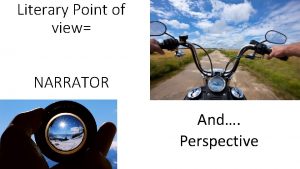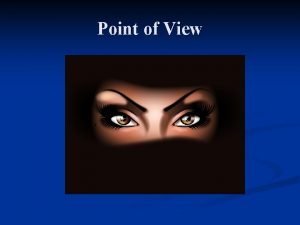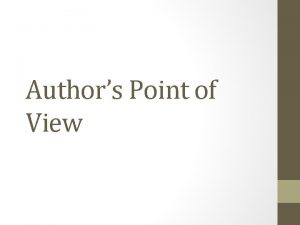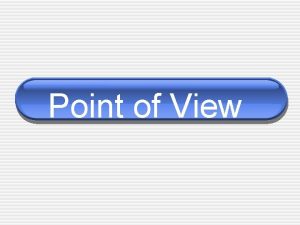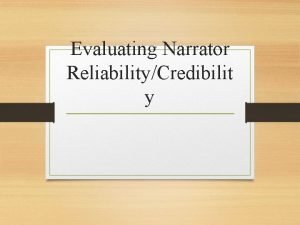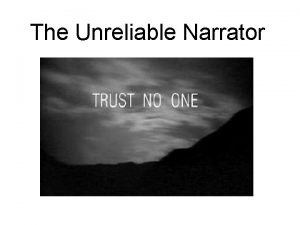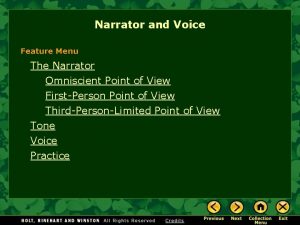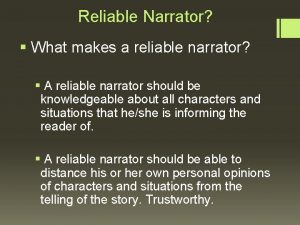NARRATOR POINT OF VIEW TYPES OF NARRATOR Narrator





















- Slides: 21

NARRATOR POINT OF VIEW TYPES OF NARRATOR

Narrator is a person who narrates something, especially a character who recounts the events of a novel or narrative poem.


�A) Anlatıcı: Masalı, efsaneyi, hikayeyi, romanı okuyucu/ dinleyici durumundaki bizlere anlatan varlıktır.


POINT OF VIEW �Herhangi bir varlık, olay ve insan karşısında, sahip olduğumuz dünya görüşü, hayat tecrübesi, kültür, yaş, meslek, cinsiyet, ruh hali ve yere göre aldığımız algılama, idrak etme ve yargılama tavrıdır.

� 1) Omniscient � 2)first person � 3)third person 1)Tarık Buğra. Küçük Ağa 2)Peyami Safa. Fatih Harbiye 3)Sabahattin Ali. Kuyucaklı Yusuf


Third person-omnicient �The third-person omniscient point of view is a method of storytelling in which the narrator knows the thoughts and feelings of all of the characters in the story, as opposed to thirdperson limited, which adheres closely to one character's -- usually the main character's -perspective.

This point of view is a commonly used literary device. Here is a handful of well-known classic examples. �"Anna Karenina" by Leo Tolstoy �"Little Women" by Louisa May Alcott �"The Scarlet Letter" by Nathaniel Hawthorne �"1984" by George Orwell �"Pride and Prejudice" by Jane Austen

Yaşanmış, yaşanan ve yaşanacak olan her şeyi bilir, görür ve duyar Üçüncü ağızdan anlatım vardır. Türk Edebiyatında da Tarık Buğra. Küçük Ağa, Mehmet Rauf-Eylül romanında ilahi bakış açısını kullanmıştır. Örnek Metin �Erdem arkasına bakmadan yürüyordu. Sinirliydi. Belli ki onu çok kızdırmışlardı. Öfkesi her halinden belli oluyordu. Eliyle garip işaretle yaparak hızlı yürüyor, bir yandan da eve gidince neler yapacaklarının bir planını yapıyordu.

�In third person limited the narrator only knows the thoughts and feelings of one character. All characters are described using pronouns, such as 'they', 'he', and 'she'. But, one character is closely followed throughout the story, and it is typically a main character. In other words, third person limited is much like when a video camera is placed over the shoulder of a character and the camera follows that person closely throughout a film.

For examples: �J. K. Rowling uses third person limited in Harry Potter and the Chamber of Secrets. The reader witnesses what Harry sees and knows his thoughts and feelings, but without ever hearing first-person narration from Harry.

�Sınırlı üçüncü şahıs anlatıcı, bir öykünün bir üçüncü şahıs tarafından; fakat sadece bir karakterin bakış açısından anlatıldığını belirten bir edebiyat terimidir. Anlatıcı diğer karakterlerin duygu ve düşüncelerini de bir karakterin bakış açısından anlatır.

Örneğin; Mark Twain'in Mikroplarla Üç Bin Yıl Orhan Pamuk'un Benim Adım Kırmızı

�Third-Person Objective: the facts of a narrative are reported by a seemingly neutral, impersonal observer or recorder. For an example; "The Rise of Pancho Villa" by John Reed. Thomas Hardy-Tess of the D’urbervilles.

�Jane Austen's novel "Pride and Prejudice, " like many classic novels, is told from the third-person objective point of view: "When Jane and Elizabeth were alone, the former, who had been cautious in her praise of Mr. Bingley before, expressed to her sister how very much she admired him. 'He is just what a young man ought to be, ' said she, 'sensible, good humoured, lively; and I never saw such happy manners! -- so much ease, with such perfect good breeding!'"

�Anlatımında anlatıcı olaylar ve kahramanlar karşısında kamera kadar bir yetkiye sahiptir. Burada niyet okuma ve kişilerin iç dünyalarını yansıtma yoktur. Türk Edebiyatında Beydeba’nın Kelile ve Dimne adlı eserini örnek verebiliriz.

REFERENCES ; �https: //www. slideshare. net �https: //www. turkedebiyati. org/anlatici-turleri-bakisacilari. htm �https: //www. google. com. tr/search �http: //www. ereadingworksheets. com/point-of-view/

THANKS FOR LISTENING EMİNE YILMAZ

 Point of view types
Point of view types What is an objective point of view
What is an objective point of view Types of point of view
Types of point of view Is directly above the front view
Is directly above the front view What line types are usually omitted from sectional views?
What line types are usually omitted from sectional views? What is revolved section
What is revolved section Half section view
Half section view Birds eye view example
Birds eye view example Elevation projection
Elevation projection Multiview to isometric
Multiview to isometric For the view create view instructor_info as
For the view create view instructor_info as Simple view and complex view
Simple view and complex view Simple view and complex view
Simple view and complex view Simple view and complex view
Simple view and complex view Render partial view with model in mvc
Render partial view with model in mvc X ray indication
X ray indication Scm cycle view
Scm cycle view User view and system view in os
User view and system view in os Unitarian view of ethics
Unitarian view of ethics Multiview orthographic projection
Multiview orthographic projection Front view top view
Front view top view How to draw cylinder
How to draw cylinder
